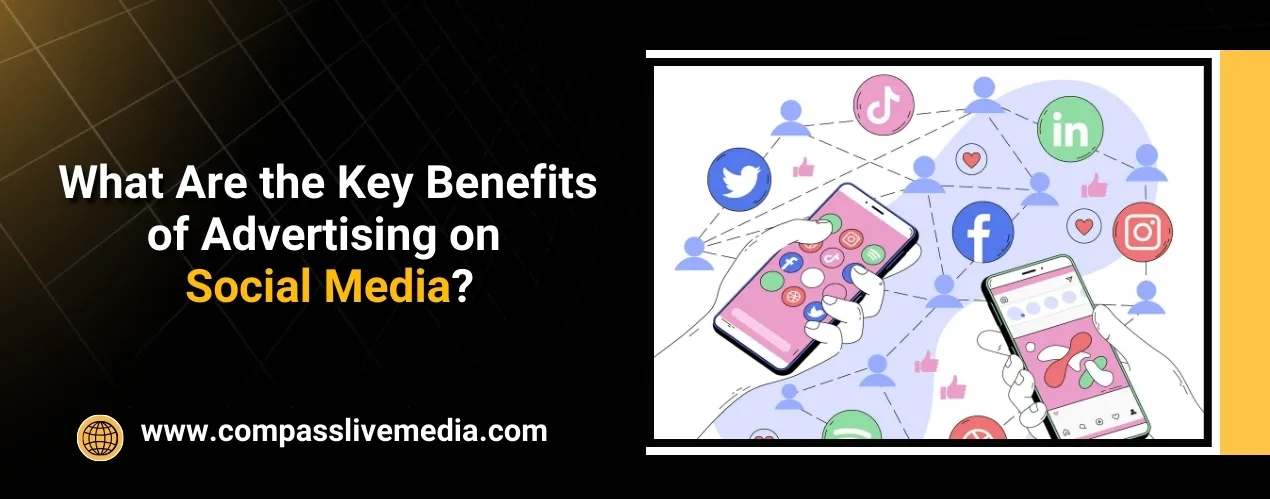What are social ads?
Social ads can be defined as the ads that exist and are placed to be formatted and pushed through social media. These ads are shown to the users in the feed. In the stories, and in the native content sections, such as on Facebook, Instagram, Twitter, LinkedIn, and others. Social media ads are specific and very flexible, cutting across the ages, locations, interests, and behaviors of clients. They can come in an image, video, carousel, or even sponsored posts, among others. The characteristic benefit of social media ads is that they are always flexible and rather accurate. Therefore, they possess a great number of advantages for business.
The Benefits of Social Media Advertising
- Targeted Reach: Targeted marketing and ad placement according to demography, interests, as well as tendencies and trends.
- Cost-effective: Popular for organizations that have flexible budgetary plans in the course of their operations.
- High Engagement: Targets such as videos and carousels keep users entertained.
- Specific Results: The real-time analysis of results and metrics helps to monitor and control the campaign.
- Brand awareness: opens up a brand to a wider market and a larger population.
- Influencer Network: utilizes numerous collaborations as a tool for reaching wider audiences and gaining more trust.
- Social Display Advertising: Integrates graphics with category selection for the best brand social display advertising.
Types of Social Media Ads
- Image ads: are the most basic and simple ad form, best used for displaying products or occasionally a particular sale.
- Video ads: informative content that will be appealing and will be able to complete a story or show a product or service in operation.
- Carousel Ads: The possibility to have two or more pictures or videos within a single advertisement, which gives a possibility to tell more.
- Story Ads: interstitials that are displayed in a full-screen and vertical format in the middle of other users’ content on instances such as Instagram and Facebook.
- Sponsored Content: Content that users come across in their feeds and timelines. Yet the brands behind such content paid to display the content.
- Influencer Ads: The promotions that the influencer network offers that their fans can easily relate to.
How Social Media Ads Work?
Benefits of Advertising on Social Media platforms involves the use of massive amounts of data that is compiled to create special advertising spaces that target particular groups of users. By using a business’s social media ad campaign, a company will be able to select the intended population in terms of age, geographical location, interests, and behavior. It then shows the ads to users with these characteristics with the intention of increasing their awareness. The advertisements placed on social media platforms can be worked on and modified continually. Which allows businesses to adjust their campaigns depending on certain factors, such as rates of performance. Such flexibility and targeting make social media advertising one of the most powerful ways to advertise.
Most Popular Social Media Marketing Platforms
- Facebook: It has the second largest pool of users among all the ad networks, and targeting options are many-fold.
- Instagram is a network that has been optimized in the way it recruits users by content. Which is why lifestyle, fashion, and retail brands are perfect examples.
- Twitter is very apropos for the real time conversations through which it might be necessary to disseminate the information in short and concise statements.
- LinkedIn is a perfect platform when it comes to B2B advertising or advertising to business professionals in any given field.
- TikTok has been directly aimed at young people, and it mainly shares information in the form of videos.
- Pinterest: beneficial for brands as a platform that aligns with home decor, fashion, and the do-it-yourself market.
Advantages and Disadvantages of Social Media Ads
Advantages:
- Targeted Advertising: Specific targeting allows you to accurately achieve high concentrations on the audience that can be interested in the advertisement.
- Cost-effective: affordable rates, so that you can be offered a quote that fits your pocket.
- High Engagement: Commercials that are engaging and have graphics stand out.
- Real-Time Analytics: Enables the monitoring and tweaking of the campaigns in a real-time manner.
- Global Reach: They can reach out to a global market at different demographics.
- Influencer Partnerships: Extends the former procedure and increases the level of credibility and the number of viewers owing to the cooperation with influential accounts.
Disadvantages:
- Ad Fatigue: Many advertisements can sometimes be irritating to the users, reducing their interaction level with the site.
- Platform Dependency: This means that relying so much on one of the platforms may be dangerous if the policies concerning it are changed.
- Privacy Concerns: Implemented data can be a privacy concern for users.
- Ad Blockers: Some of the users use ad blocking applications. Which minimize the number of times ads are viewed.
- Competition: A high level of competition on a selected site may also lead to an increase in the level of cost.
- Negative Feedback: Of course, using ads to spread information can also lead to negative views that harm brand image.
Conclusion
Advertising on social media benefits companies that want to make the most of their online marketing strategies. Accurate target group addressability, affordable campaigns, high activity, and measurable effects—the benefits are obvious. However, it remains crucial to look at the two sides and weigh how these gains apply to the chances and risks like ad fatigue and platform dependency. In light of this analysis of the factors that govern social media advertising. It is clear that the efficiency of business marketing goals and objectives in the future of the digital world can be significantly determined by businesses that apply the right strategies.
FAQs
1. What is a key benefit of using social media?
Social media enhances communication, creativity, and network expansion, allowing users to connect, share ideas, and learn new things, making it a valuable tool.
2. What is the value of social media?
Social networks provide a unique opportunity for marketers to census targeted consumers, monitor their activity, and adjust marketing strategies and messages accordingly.
3. Why is social media so fun?
Such opportunities as the possibility to maintain conversations with friends and distant relatives, the ability for senior individuals to find old friends, and the restoration of lost relationships are provided by social media.




